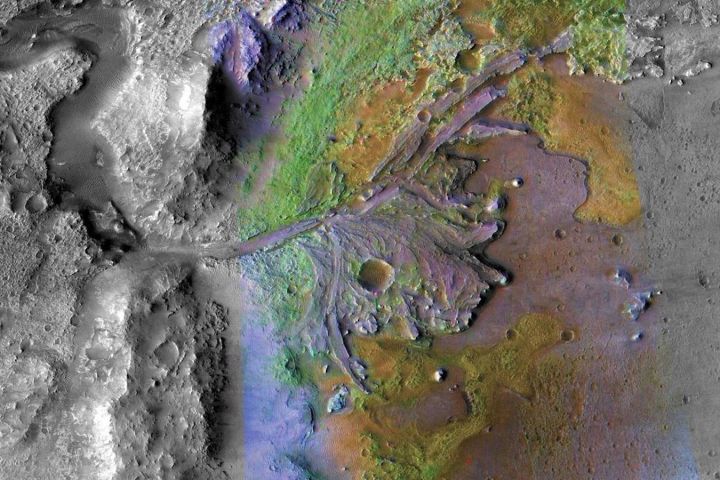A new study shows exciting results about the Jezero Crater on Mars, where the Perseverance rover is currently exploring — but despite what some headlines suggest, Perseverance hasn’t yet found evidence of life on the red planet.
The Jezero Crater is the most exciting place on Mars and was deliberately chosen for the Perseverance rover to explore because it’s the best guess scientists have at a location that could potentially have hosted microbial life billions of years ago. What makes the crater so special is the large delta that exists there, which is thought to have been an ancient wetland. An ancient lake is believed to have existed in the crater long ago — which would make it a hospitable place for life to have emerged. The new research confirms that this area did indeed host a lake, but it doesn’t say anything about whether there was life there.

The challenge of understanding the history of this region is that scientists have been working primarily from orbital data, which can only tell them so much. “From orbit we can see a bunch of different deposits, but we can’t tell for sure if what we’re seeing is their original state, or if we’re seeing the conclusion of a long geological story,” said lead researcher David Paige of the University of California, Los Angeles, in a statement. “To tell how these things formed, we need to see below the surface.”
Paige and his team have used an instrument on Perseverance called the Radar Imager for Mars’ Subsurface Experiment or RIMFAX to peer beneath the planet’s surface. By using this radar, they can see reflections beneath the ground down to depths of about 20 meters. They can look at these reflections to work out what layers exist there, finding out how thick a layer is and what it is composed of. “Some geologists say that the ability of radar to see under the surface is kind of like cheating,” said Paige.
This data shows layers in the rock of the delta, with two layers of sediment between layers of erosion. That suggests there was a time when the area was bare rock, and then a lake appeared, which deposited sediment. At some point, the level of the lake dipped low enough that more erosion occurred before refilling again. Taken together, the evidence is strong that there definitely was a lake here, which increases the chances that life could potentially have developed in the region.
“The changes we see preserved in the rock record are driven by large-scale changes in the Martian environment,” Paige said. “It’s cool that we can see so much evidence of change in such a small geographic area, which allows us to extend our findings to the scale of the entire crater.”
The research is published in the journal Science Advances.



